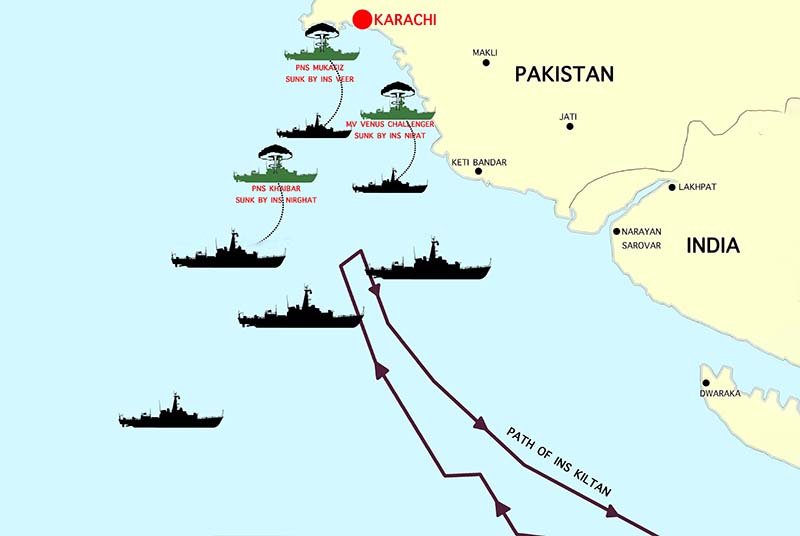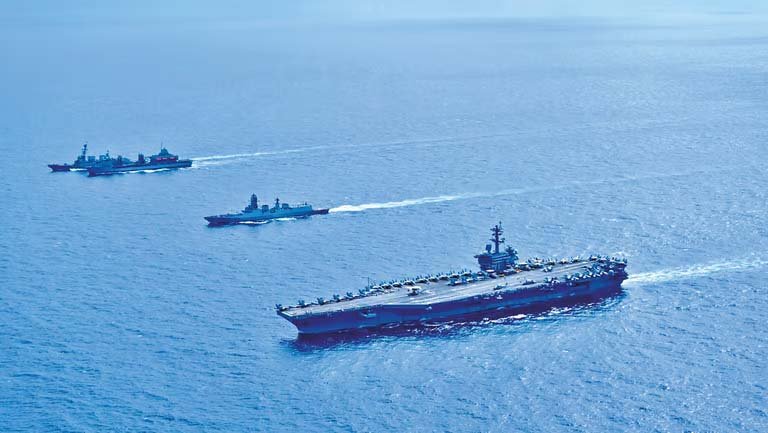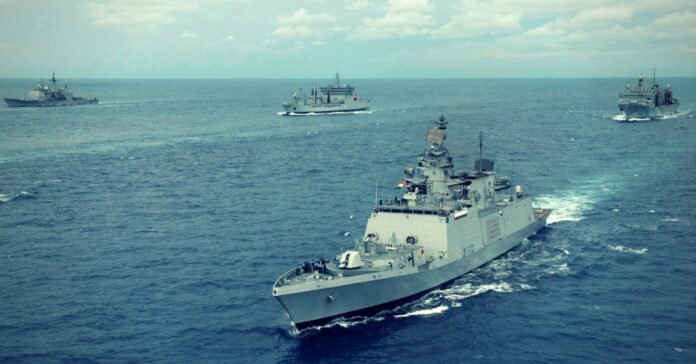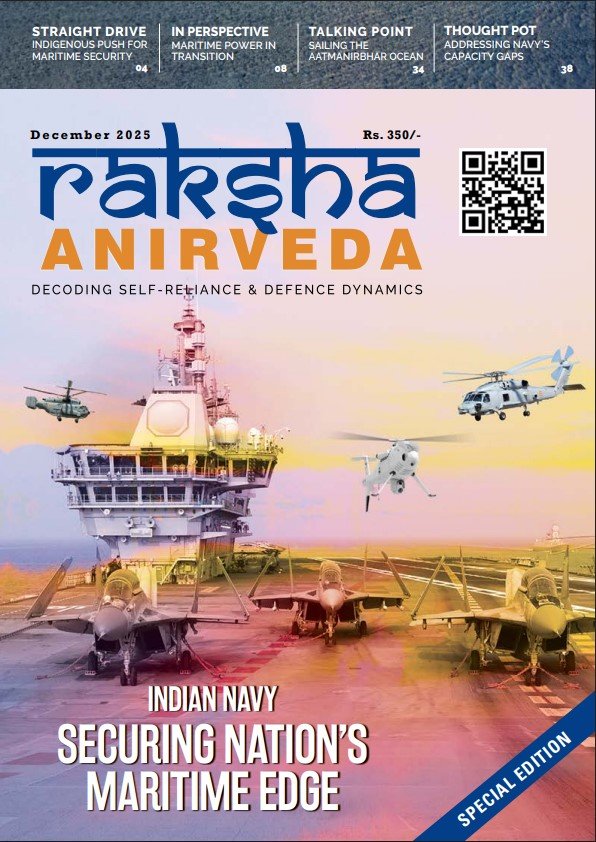The Indian Navy today is a powerful force that not only safeguards India’s maritime borders but also plays a key role in ensuring regional stability and international maritime security. Navy Day is an annual event that is celebrated every year on December 4 to recognise the Indian Navy’s contributions towards national security, protecting maritime interests, and maintaining peace.
It is an important landmark to honour the bravery, professionalism, and legacy of naval personnel who have made the ultimate sacrifice in the line of duty specifically during Operation Trident in the India-Pakistan war of 1971. This operation led to a decisive naval attack on Pakistan’s naval infrastructure and played a critical role in the outcome of the war.
Historical Background of Navy Day
On December 4, 1971 the Indian Navy launched Operation Trident, a daring attack on the Pakistani port city of Karachi. Operation Trident was a relatively rare occasion where submarines, missile boats, and air crafts were deployed to inflict heavy damage on the Pakistani naval forces and sink PNS Ghazi, one of the most advanced submarines in the Pakistan Navy, which was seen as a formidable threat by the Indian naval forces.
Ghazi’s was positioned to intercept Indian naval vessels around the coast of Visakhapatnam, a major Indian naval base on the eastern coast. Pakistani intelligence believed that India would launch an amphibious assault on East Pakistan through the Bay of Bengal, and so Ghazi was deployed to prevent this eventuality.
However, Ghazi’s fate was sealed when it encountered INS Rajput, Indian Navy’s guided-missile destroyer conducting anti-submarine warfare operations in the area. On December 4, 1971, Ghazi was reported missing under mysterious circumstances after an explosion in its vicinity. Even today the explosion which caused the submarine to sink remains a mystery.
According to Indian naval accounts, Ghazi was destroyed by depth charges dropped by INS Rajput. The Pakistani Navy, on the other hand, maintains that Ghazi sank due to an internal explosion possibly caused by a malfunction in its torpedo tube. However, yet another theory suggests that Ghazi might have collided with underwater mines laid by the Indian Navy off the coast of Visakhapatnam leading to the blast that sank the vessel.
Whatever be the cause of the blast, no one can deny the fact that sinking of the PNS Ghazi was a crippling blow to the Pakistani Navy particularly because it was one of Pakistan’s most advanced warships and that all 93 crew members on board including its captain, Commander Zafar Muhammad perished in the incident.
Operation Trident was a relatively rare occasion when submarines, missile boats, and air crafts were deployed to inflict heavy damage on the Pakistani naval forces and sink PNS Ghazi, one of the most advanced submarines in the Pakistan Navy, which was seen as a formidable threat by the Indian naval forces
Operation Trident, marked a critical moment in the 1971 war. While the war was largely fought on land, it also involved significant naval operations. The Pakistan Navy was superior to India and posed a threat to India’s maritime interests. To counter this, the Indian Navy launched Operation Trident to weaken Pakistan’s naval power and disrupt its maritime activities in the region.
The primary objectives of Operation Trident were to damage and neutralise Pakistan’s naval presence, especially its warships and merchant vessels limiting its ability to launch retaliatory strikes and demonstrate India’s naval strength and growing capabilities of the Indian Navy as a formidable force in the Indian Ocean region. Hence India launched a surprise attack on Karachi port to undermine Pakistan’s naval and economic position, and disrupt its maritime trade and oil supplies.
On the night of December 4, 1971 Indian missile boats, submarines, and aircraft carried out Operation Trident that remains one of the most successful naval strikes in history.
The Indian Navy’s strategy involved using small, but fast missile boats and submarines equipped with powerful Styx anti-ship missiles to attack Karachi and inflict significant damage to larger ships in the area. The objective was to deliver a devastating blow to Pakistan’s naval capabilities.
INS Nipat, INS Veer, and INS Himgiri –Indian Navy’s three missile boats were assigned the task of launching missile strikes on Pakistan’s ships near Karachi. These missile boats were designed for high-speed, hit-and-run attacks, making it difficult to track and counter them.
INS Karanj, a Sindhughosh-class submarine was tasked to prepare the ground for the attack by patrolling and preventing Pakistani vessels from leaving the port and in general providing support during the operation.
The Indian Navy also used Sea Hawk naval aircrafts to support the missile boats and submarines and attack enemy targets. The Indian Air Force was deployed to carry out multipronged airstrikes against Pakistan’s naval installations and port infrastructure.
The results were stunning as the Indian Navy managed to sink– two Pakistani warships – PNS Khaibar and PNS Shah Jahan within hours of launching the operation. The attack also severely damaged Pakistan’s oil storage facilities and merchant vessels, disrupting Pakistan’s maritime trade.
The success of Operation Trident sent shockwaves through the Pakistani military. It was the first time that the Indian Navy had successfully launched an attack on such a scale and inflicted such damage on Pakistan’s naval assets. The operation weakened Pakistan’s naval power and proved India’s ability to strike with precision and effectiveness.
The sinking of two warships and the damage to Karachi’s oil storage facilities were major blows to Pakistan’s military strategy but the Pakistan navy could not retaliate because of the severe losses in the operation.
On the other hand Operation Trident boosted India’s confidence and showcased the Indian Navy’s ability to carry out complex naval operations with limited resources. It enhanced the morale of the Indian Navy and proved that the Navy could operate efficiently and effectively in the face of challenging adversities. The Indian Navy’s ability to strike Pakistan’s most important naval base demonstrated that no target was beyond its reach.
The operation demonstrated the importance of naval power in modern warfare and underscored the need to maintain a strong and capable navy, capable of defending national interests in a volatile region. India’s success in Operation Trident established the Indian Navy as a dominant force in the Indian Ocean region and beyond.

The success of Operation Trident highlighted the importance of modern, fast-moving naval assets and advanced missile technology in warfare.
Operation Trident also highlighted the importance of inter-service cooperation between the Navy, Air Force, and Army and the need to include a combination of aircraft carriers, destroyers, and submarines in the Navy’s arsenal. Operation Trident also underscored the strategic importance of the Indian Ocean and the need for a strong naval presence to secure vital trade routes and ensure maritime security.
The Indian Navy’s success in Operation Trident not only weakened Pakistan’s naval capabilities but also signalled India’s dominance in the region. The operation was a game-changer in naval warfare that demonstrated the importance of precision, skill, and strategic naval power in modern warfare.
Significance of Navy Day 2024
Navy Day is an opportunity to reflect on the crucial role of the Indian Navy in national security. Navy Day is observed every year to raise public awareness about the Navy’s role and its operations. It is a chance for the general public to understand the challenges faced by the naval forces and the strategic importance of a powerful and well-equipped navy. Engaging with citizens, particularly the youth, fosters respect for the Navy and encourages potential recruits. It is also a moment to honour the bravery, selflessness, and dedication of the men and women in the navy who serve the nation at sea, often in challenging and dangerous conditions. The valour and professionalism demonstrated during the 1971 war is a source of inspiration for future generations of naval officers.
India, with its long coastline and access to vital international shipping lanes, relies heavily on its naval forces to protect its interests. The Indian Navy ensures the security of the sea lanes, which are vital for international trade and energy supply lines. The Indian Navy is integral to India’s defence framework and protects its interests in the Indian Ocean Region (IOR) and beyond.
Themes and Events on Navy Day 2024
Navy Day is marked by various events and activities across the country, with the focal point being a grand celebration in New Delhi and other key naval bases such as Mumbai, Kochi, and Visakhapatnam. These events are designed to showcase the capabilities of the Indian Navy, reflect on past achievements, and emphasize the strategic role the Navy plays in India’s defence apparatus.
One of the key events of Navy Day is the ceremonial parade. The parade typically includes the participation of naval officers, sailors, and maritime personnel, who showcase their discipline and dedication to the nation. The Chief of Naval Staff and other senior naval officers participate in the ceremony, offering salutes to fallen heroes and veterans. The parade serves as a demonstration of the professionalism and efficiency of the Indian Navy.
The Navy Day celebrations often include opportunities for the public to visit and tour naval ships, submarines, and aircraft. This enables civilians to gain a closer understanding of the Navy’s operations and the complex technologies used to maintain India’s maritime defence. These open houses are especially popular among young people who are interested in pursuing careers in the armed forces.
On Navy Day, the Indian Navy organises air shows and naval displays to exhibit the power and strength of its naval assets. Aircraft from the Indian Navy demonstrate their precision and agility in sky displays, while naval ships showcase their might through coordinated manoeuvres and demonstrations. These displays highlight the Navy’s capability in both warfare and humanitarian operations.
Navy Day is also a time for honouring exceptional service and bravery. Medals and awards are presented to naval personnel for their contributions to the service and the nation. These awards serve to inspire other personnel and foster a sense of pride within the Navy. They acknowledge the hard work, dedication, and sacrifices of those who serve in the Indian Navy.

To strengthen ties between the Navy and the public, Navy Day also includes educational programs, outreach activities, and media campaigns. These initiatives provide an opportunity for the public to engage with the Navy, learn about its operations, and understand its role in national security. This fosters a sense of pride and appreciation for the Navy among the general population.
Evolution and Growth of the Indian Navy
The Indian Navy has undergone significant growth and modernisation over the years, expanding its reach and capability. The Navy plays a key role in India’s “Look East” and “Act East” policies, which focus on strengthening ties with countries in the Indian Ocean Region (IOR) and Southeast Asia. The Indian Navy is actively engaged in ensuring peace and stability in the IOR, which is home to some of the busiest maritime trade routes in the world.
The Indian Navy has made considerable advancements in its fleet, incorporating state-of-the-art warships, submarines, and aircraft. The induction of INS Arihant, India’s first nuclear-powered submarine, is a testament to the Navy’s growing capabilities in strategic deterrence. The Navy also continues to modernise its surface warfare capabilities, with advanced warships like the INS Kolkata and INS Vikrant, India’s first indigenous aircraft carrier.
The Indian Navy’s presence in the IOR has grown steadily. Through maritime security cooperation agreements, joint exercises, and the deployment of naval assets in key international waters, the Indian Navy has become an essential player in ensuring the free flow of trade and the safety of international shipping routes. The Navy’s presence in this region also acts as a deterrent against piracy and ensures the protection of India’s maritime borders.
According to Indian naval accounts, Ghazi was destroyed by the depth charges dropped by INS Rajput. The Pakistani Navy maintains that Ghazi sank due to an internal explosion possibly caused by a malfunction in its torpedo tube. Whatever be the cause of the blast, no one can deny the fact that sinking of the PNS Ghazi was a crippling blow to the Pakistani Navy because it was one of Pakistan’s most advanced warships and that all 93 crew members on board including its captain, Commander Zafar Muhammad perished in the incident
Beyond its primary role in defence, the Indian Navy has also been instrumental in humanitarian efforts. Whether it’s responding to natural disasters like the 2004 Indian Ocean tsunami or providing aid to neighbouring countries during emergencies, the Indian Navy has demonstrated its commitment to international cooperation and humanitarian efforts.
Over the years, the Indian Navy has placed a strong emphasis on “Make in India” and self-reliance. The development of indigenous warships, submarines, and other defence technologies has reduced India’s dependency on foreign suppliers and helped the Navy maintain an edge in naval warfare.
The Indian Navy regularly participates in joint naval exercises with allied countries like the United States, Japan, Australia, and Russia. These exercises help enhance interoperability and strengthen the strategic partnerships between these nations, ensuring maritime security and stability in the Indo-Pacific region.
Conclusion
The Indian Navy continues to evolve, embracing modern technology, strengthening its capabilities, and asserting its presence in the Indian Ocean Region and beyond. The significance of Navy Day transcends beyond just a commemoration of military victories. It is an opportunity to recognise the sacrifices of the men and women in the Navy, reflect on their role in safeguarding the nation’s interests, and reaffirm India’s commitment to maintaining peace and security in the maritime domain.
–The writer is a seasoned media professional with over three decades of experience in print, electronic, and web media. He is presently Editor of Taazakhabar News. The views expressed are of the writer and do not necessarily reflect the views of Raksha Anirveda






